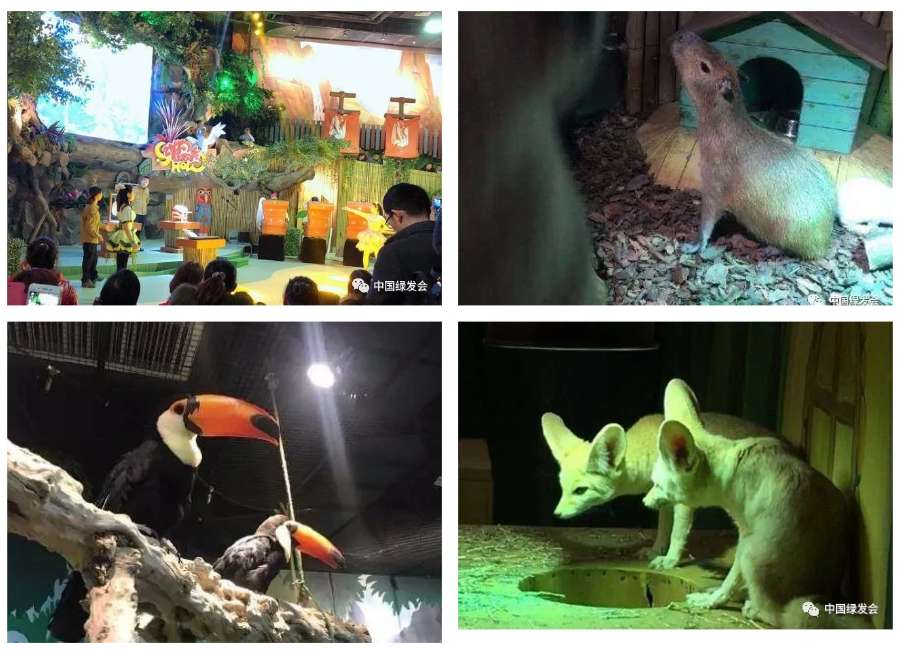According to media reports, a large number of animals have been found dead in an indoor zoo in Changsha City, Hunan Province: some of them are suspected to be starved as the bodies are not in integrity.
A volunteer-based in Hebei Province contacted the China Biodiversity Conservation and Green Development Foundation (CBCGDF) and introduced similar local cases and his comments as follows:
1. Many animals in indoor zoos are trained as a circus, but no fierce animals can be found in zoos.
2. The business operation is applicable as only a few investments would bring huge profits. Basically, investors would achieve cost-recovering in the same year. With the rapid development of the real estate market, shopping malls and complexes spring up like mushrooms. Any lucrative industry would attract investors in flocks. It seems to be a good choice to invest in indoor zoos. If the industry gains popularity among county-level cities, then we could foresee a disaster unfolds here as to how to dispose of the animals would be a great challenge once these zoos go bankrupt. Two indoor zoos were constructed in Shijiazhuang two years ago. According to the volunteer’s field visits and online research, the common feature of indoor zoos scattered nationwide is the unpleasant reality that animals are forced to face with groups of visitors every day and interact with kids. The operation is sugared up to narrow the distance between children and wildlife, but it is increasing risks to public health security.
3. An indoor zoo in Shijiazhuang incredibly functions as a wildlife rescue station. How could a private profitable organization be responsible for wildlife rescue and rehabilitation, adaptive training for wild release? The majority of rescued wild animals would be arranged for the exhibition. Taking spotted seal as an example, seal babies CBCGDF rescued last year could be sent to indoor zoos. Most animals in indoor zoos are from the wild, and we wish that these zoos would never become the venue for wildlife illegal trade. The indoor zoos in Changsha which were reported online are warning non-compliance in the industry.
The volunteer says he has called to the indoor zoo which also serves as a wildlife rescue station in Shijiazhuang and pretended to seek their assistance in rescue a wild animal. He asked to engage in the participation but was informed that once the animal is taken over by the station volunteers would not be allowed to participate in any process of the rescue. Rescued animals would have no relations with volunteers whether they are alive or dead, or whether they are released to the wild or not.
4. An indoor zoo usually holds 2,000 animals (fishes not included). It is said that these animals are mainly from overseas as domestic common animals have little attraction to kids. The most common creatures in indoor zoos are mongoose, colorful birds, capybara, snake, turtle, lizard, scarlet macaw, etc. According to the volunteer, the application of opening an indoor zoo would be approved by the municipal forestry authority as long as no national second-class and above protected animals are introduced in. Bad management will leave thousands of animals in peril, just like what has happened to creatures in the indoor zoo in Changsha. Even if an animal can get care and food in zoos, there is no way for them to enjoy the sunshine. The wet and obscure environment facilitates the spread of disease.
5. From the perspective of policy, several approvals should be obtained before operating an indoor zoo, including the environmental impact assessment of the zoo, and the procedure should be reviewed by multiple departments such as the office in charge of city planning and landscape bureau. But it is not difficult for agencies who are able to make a large investment to gain the required certificate as the administrative charges are not expensive.
The Biology and Science Ethics (BASE) of China Biodiversity Conservation and Green Development Foundation (CBCGDF) appeals to be cautious about the spread of animal-human disease in small, wet and poorly ventilated rooms where squeeze a lot of animals. Children belong to the vulnerable group to the pandemic.
Moreover, where these animals come from? Does the indoor zoo get official approval from the municipal forestry department? And how did the operator obtain the business license?
We sincerely invite the relevant departments' intervention to carry out an investigation into the zoo for the sake of public health security. CBCGDF will keep close eyes to this issue and update timely.


(Photo credit: CBCGDF volunteers)
Original Chinese article:
http://www.cbcgdf.org/NewsShow/4854/11851.html
By / Yanqing Modified / Maggie
